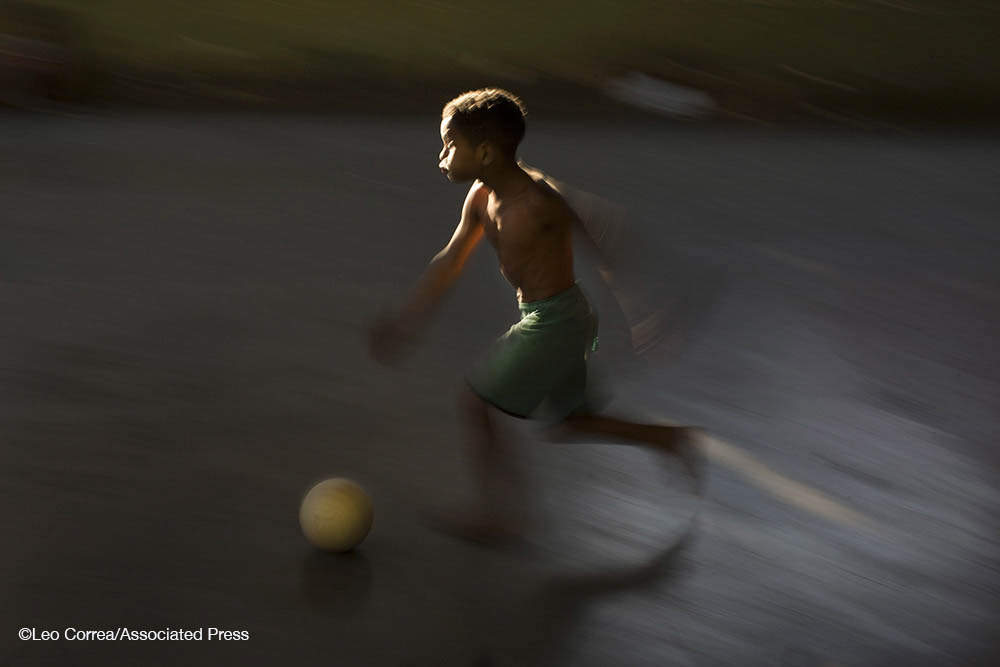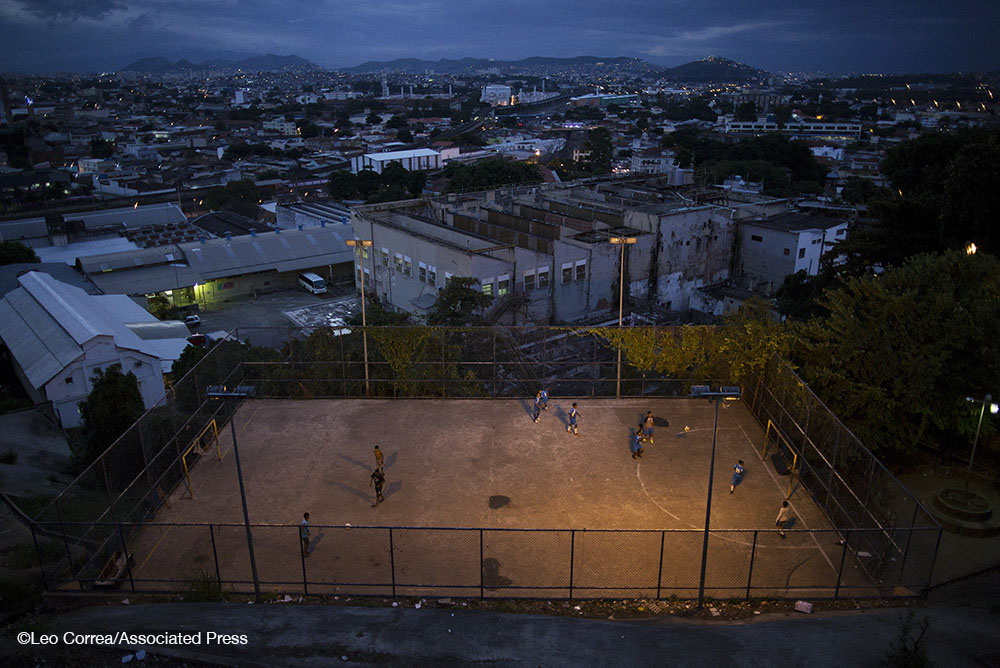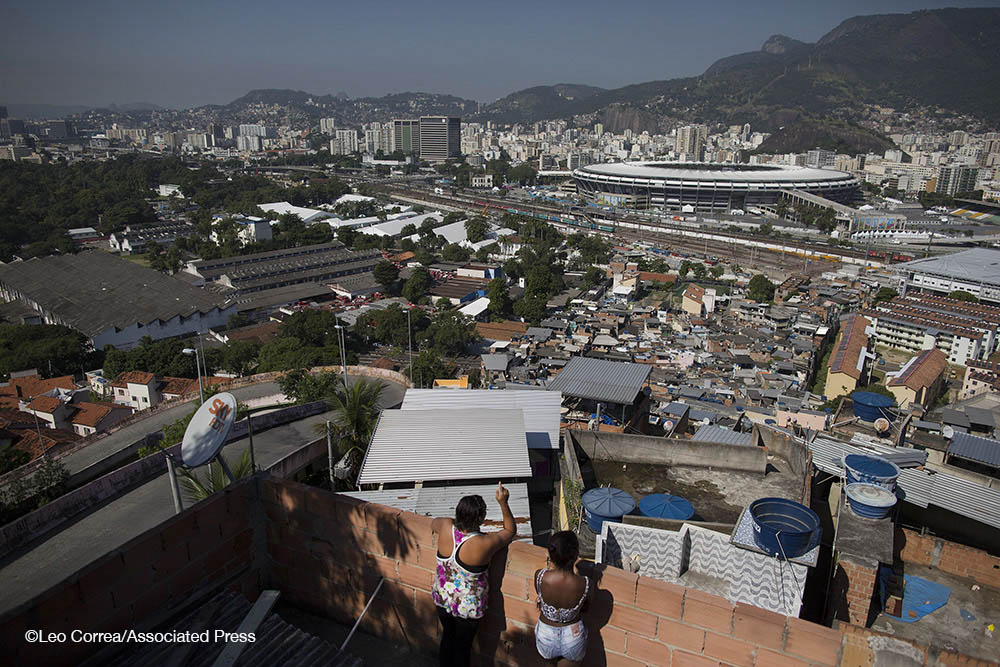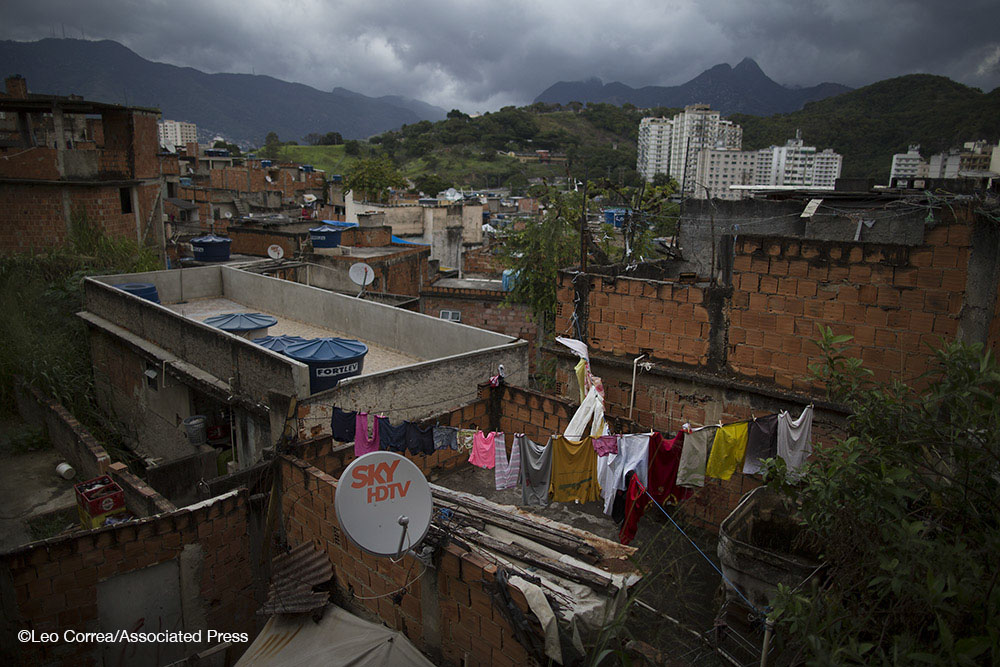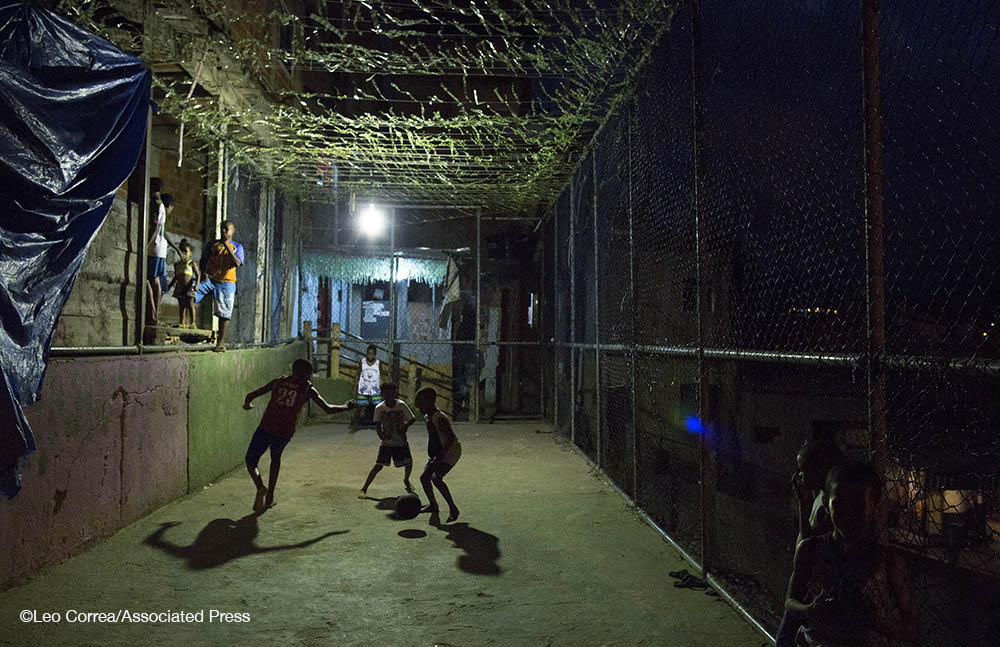Brazil Stadium Inspires Slum Dwellers
The aspiring soccer stars of Rio de Janeiro’s historic Mangueira slum don’t have far to look for inspiration.
The slum sits on a hill overlooking Brazil’s temple to soccer, the fabled Maracana stadium, where legends from Pele to Neymar have played.
Less than half a kilometer separates the sprawling slum from the stadium, where seven World Cup matches will be played, including the July 13 final.
But with tickets to the tournament expensive and hard to come by, the gulf between Mangueira and Maracana is almost impassable.
“I would like to watch a final match between Brazil and Portugal because I’m a fan of Brazil’s Neymar and Portugal’s Cristiano Ronaldo,” said 13-year-old Alex Silva, a Mangueira resident. “But I know I won’t get to because I don’t have money to buy a ticket.”
Some of Mangueira’s other budding soccer talents concurred: Despite their physical proximity, they’ll be following the World Cup in other ways.
“I think it’s cool to have a World Cup in the Maracana, but I’ll watch the games on TV,” said 14-year-old Alex Borges.
Still, the practical obstacles in accessing the stadium haven’t dampened the boys’ passion for what Brazilians call the “beautiful game.”
Mangueira’s few football pitches, as well as many of the flat surfaces unoccupied by houses, are constantly alive with residents of all ages honing their soccer skills.
“Soccer can bring changes to a nation and it can even stop wars,” said Washington Fortunato, 55, the president of Mangueira’s residents’ association. “However, millions were spent on the renovation of the stadium, which didn’t bring any benefits to our community. We still have health and education problems. And alleys full of garbage.”
Assignment for The Associated Press. Text AP
